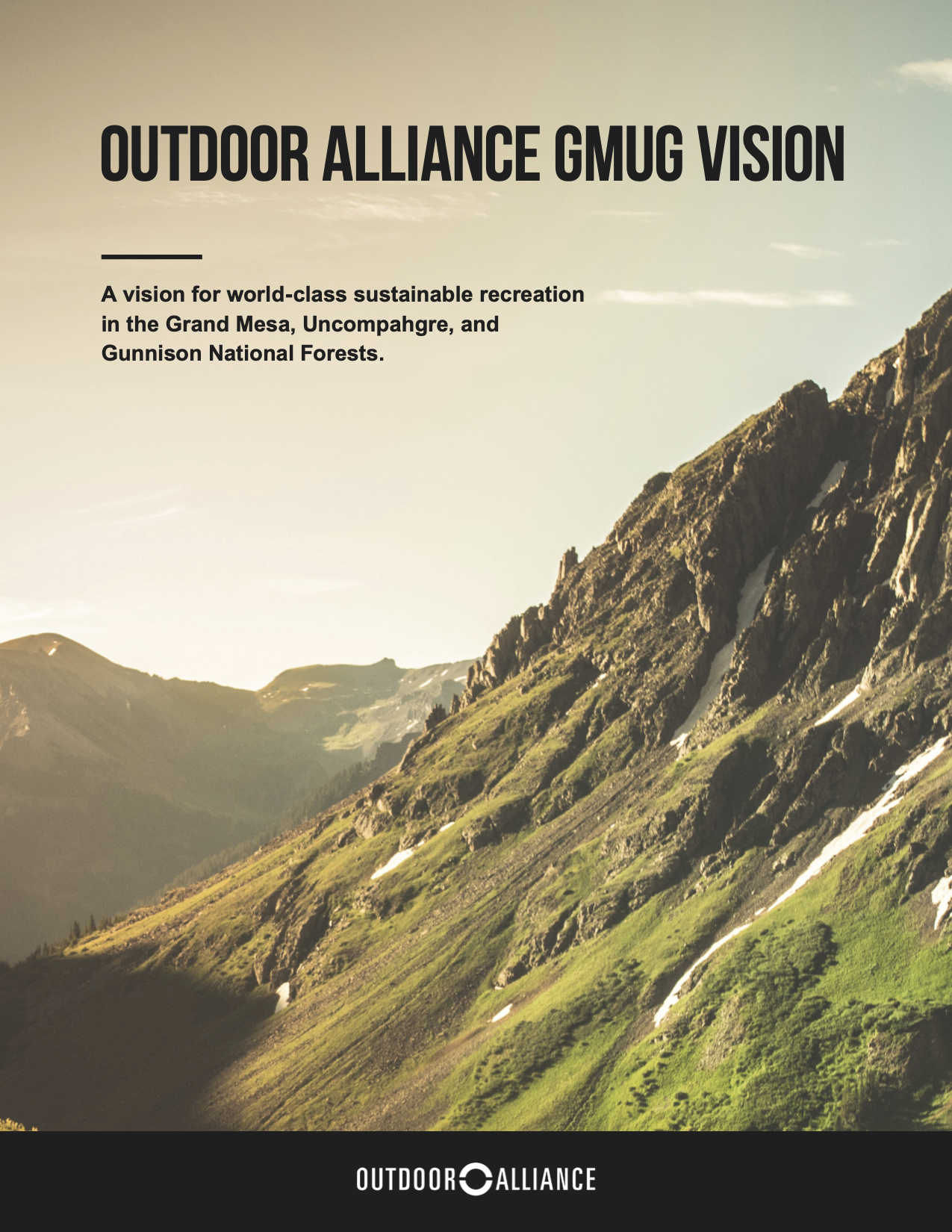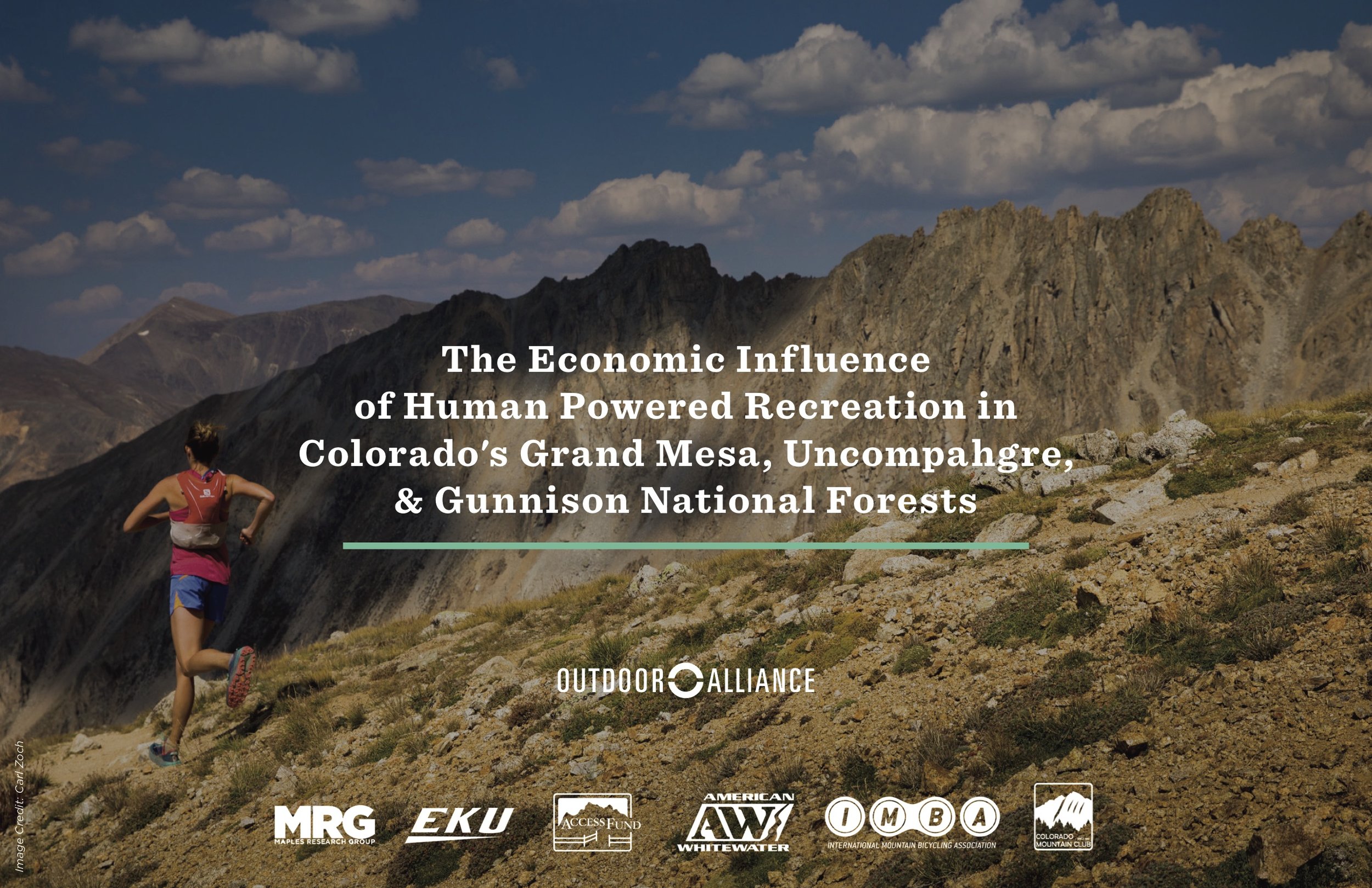Forest Service Releases Draft Plan for GMUG National Forests
Photo credit: Larry Goodwin, Gunnison National Forest
On August 13th, the Forest Service released the Draft Forest Plan and Draft Environmental Impact Statement for the 3.2 million-acre GMUG National Forests in Colorado. The Grand Mesa, Uncompahgre, and Gunnison National Forests (GMUG) encompass a diversity of landscapes that support innumerable opportunities for human-powered recreation – from Nordic Skiing on the Grand Mesa to ice climbing in the Uncompahgre Gorge to whitewater kayaking on Crested Butte’s challenging steep creeks. If you like to get outside and explore the GMUG, you have the chance to weigh in on how this land will be managed for the next 20 years.
Until November 12th, the Forest Service is accepting public comments on the GMUG National Forests Draft Revised Forest Plan. The GMUG and the National Forest Foundation will be co-hosting a series of virtual webinars and open houses to provide an introduction to the Draft Forest Plan. They will give an overview of the planning process and the plan alternatives on Tuesday, August 17th, and delve deeper into key issues identified by the public on Thursday, August 19th. More information for the events can be found by clicking the link below.
Outdoor Alliance and our partners on the ground in Colorado, including American Whitewater, Colorado Mountain Bike Association, Colorado Mountain Club, Colorado Plateau Mountain Bike Trail Association, Crested Butte Mountain Bike Association, Silent Tracks, and Uncompahgre Watershed Partnership have been deeply involved in the GMUG forest planning process and will be reviewing the Draft Forest Plan soon. We have submitted our own proposal for how to manage key areas (check it out here) and you can view our comments on the Working Draft Plan to the Forest Service here.
If you are ready to submit a comment now, click the link below and it will take you to the GMUG comment portal.
What makes the GMUG special?
If you’re one of the 2.6 million people who visit the Grand Mesa, Uncompahgre, and Gunnison National Forests each year, you know that this area of western Colorado is incomparable. A series of economic studies, commissioned by Outdoor Alliance, measures the economic impact of outdoor recreation in the region. Researchers found that outdoor recreation in the Grand Mesa, Uncompahgre, and Gunnison National Forests generates $392 million in annual spending on paddling, climbing, hiking, snowsports, and mountain biking while also supporting local jobs and attracting both businesses and residents to Colorado.
The Grand Mesa rises up 6,000 feet from the city of Grand Junction, which lies to the west of the Forest. One of the world’s largest flat-top mountains, the Grand Mesa is host to more than 300 lakes – an oasis that borders the desert landscape to the west. The Mesa provides endless hiking, mountain biking, and rock climbing opportunities in the summer and world-class Nordic skiing in the winter. The area, although vast, is easily accessed from Grand Junction and the I-70 corridor.
The Uncompahgre National Forest surrounds the small mountain towns of Telluride and Ouray, known for their world-class backcountry skiing and ice-climbing, respectively. The headwaters of the Uncompahgre and San Miguel Rivers both originate in the forest, providing invaluable river recreation opportunities. With three alpine wilderness areas, Mt. Sneffels, Lizard Head, and the Uncompahgre, the forest attracts visitors during all seasons.
The Gunnison National Forest is the source of the mighty Gunnison River, which originates at the confluence of the East and the Taylor Rivers. Colorado’s impressive Elk Mountains border the Forest to the north, the Sawatch Range frames the eastern border, and the San Juans are located to the south. The small towns of Gunnison and Crested Butte are the populous centers in the area and Gunnison is home to Western Colorado University (WCU). WCU boasts a strong outdoor recreation program and has been a very active research hub for the valley.
Outdoor Alliance and our partners will be sending feedback to the Forest Service about what works and what we’d like to see improved in the Draft Forest Plan. Stay tuned for our full analysis and recommendations.




